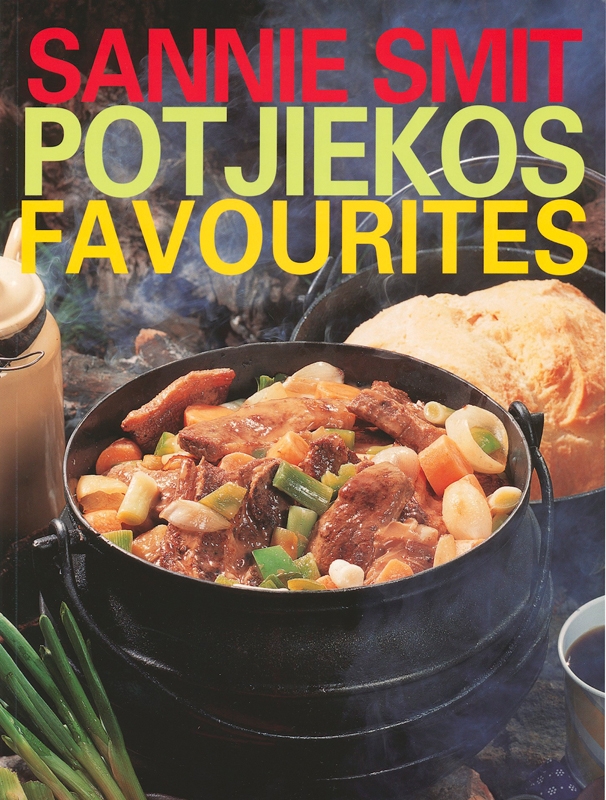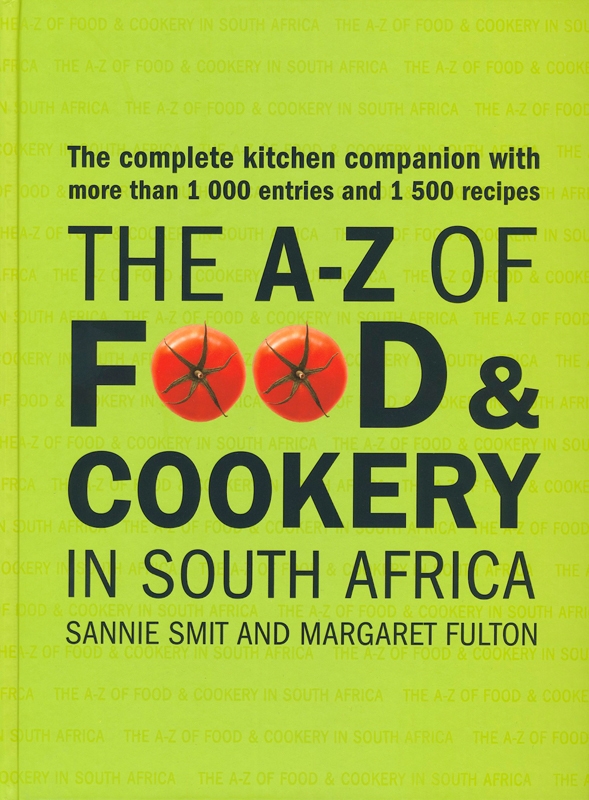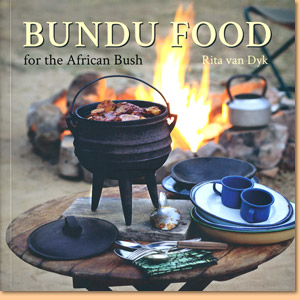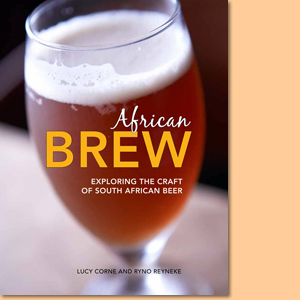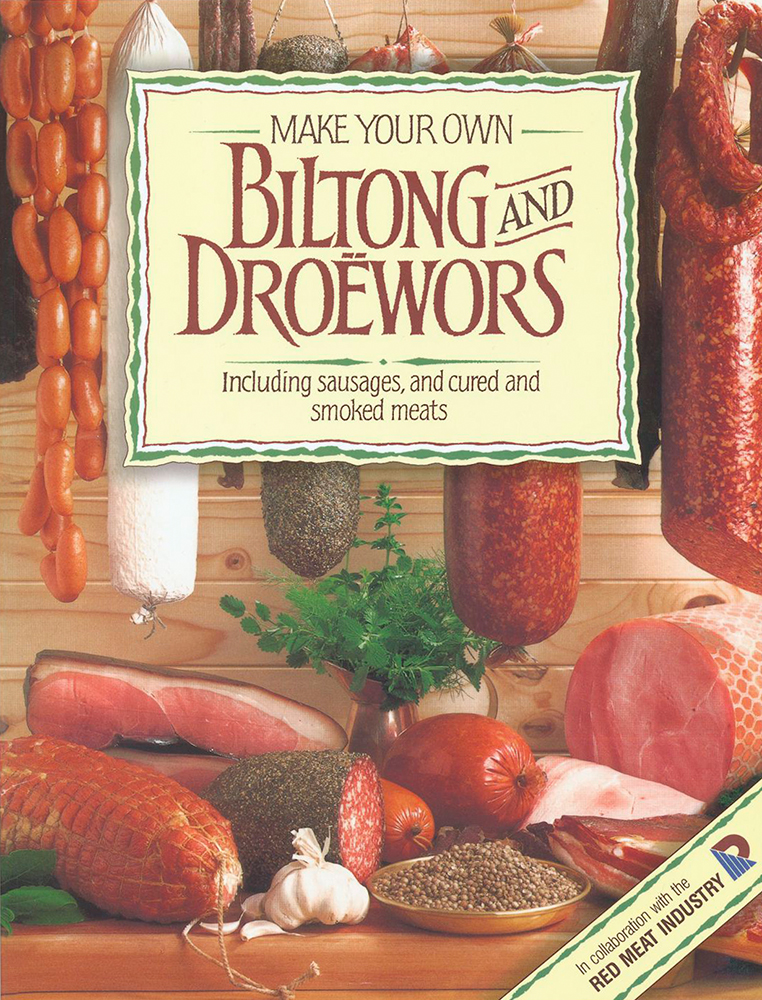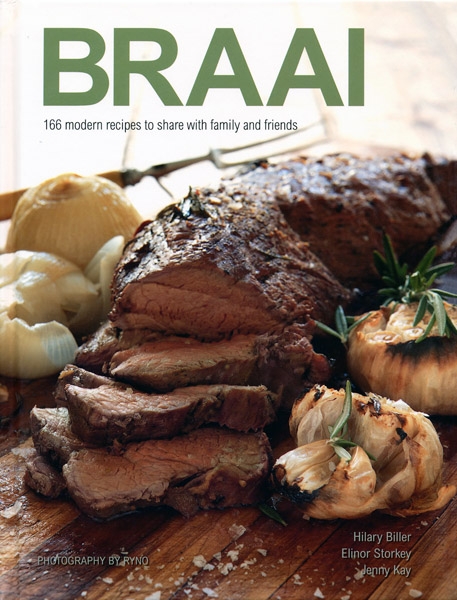Potjiekos Favourites, by Sannie Smit
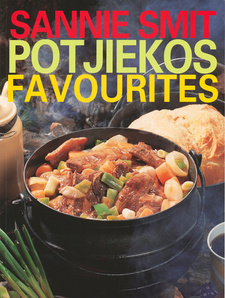
Potjiekos Favourites, by Sannie Smit. Random House Struik, Cape Town, South Africa. ISBN 9781868724345 / ISBN 978-1-86872-434-5
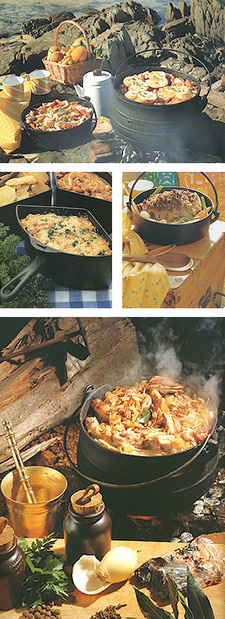
Mouthwatering photographs from Sannie Smith's Potjiekos Favourites. ISBN 9781868724345 / ISBN 978-1-86872-434-5
Potjiekos is really the epitome of South African hospitablity: good food, good wine and good company. Author Sannie Smit grew up with potjiekos on a farm in the northern Cape where life was simpler and honest country cooking was enjoyed to the full. In this must have and often reprinted cookbook she introduces to her favourites among the uncounted recipes of South Africa.
Ingredients
When it comes to potjiekos, the recipes, rules and regulations are only there to guide you, so you don't have to follow them blindly. The imaginative use of ingredients is the thing that really counts, as potjiekos recipes are nearly always created and prepared according to what's available. Remember too, that the aroma and flavour of the main ingredient should not be overpowered, the other ingredients are added simply to enhance the flavour. If you use too many different vegetables, garnishes and side dishes in relation to the main ingredient, the subtle blend of flavours will be lost and what might have been a delicious meal will turn into something rather less than enjoyable.
Meat: Potjiekos works on the moist-heat cooking principle where moisture is tormed during the cooking process. The best meat cuts to use in potjiekos are the economical cuts with a high percentage of white connective tissue (sinews), which become tender and gelatinous when simmered for a long time to develop the flavour. These cuts are, therefore, more suitable than fillet and sirloin, which are, in any case, much too expensive to use for potjiekos. Furthermore, it's not necessary to buy only choice cuts from the higher grades for potjiekos, although one has to admit that meat of good quality does make a difference to the end result. For maximum flavour it is best to use meat such as brisket, shin, and neck, sawn into pieces. The meat for potjiekos does not have to be ripened, unlike choice beef cuts used for grilling or roasting. Not all meat takes hours to cook so if you are in a hurry, opt for mince, chicken or fish. The most suitable cuts of meat are: (...)
Poultry: Poultry of any kind is suitable for all kinds of potjiekos, from creamy stews to fruity curries. Available conveniently cut into portions, chicken is quick-cooking and can be prepared in a number of different ways. Its flavour is enhanced by the addition of herbs, fruit, bacon, wine, mushrooms, tomatoes and spices. The moist-heat method of cooking is also ideal for turkey, as the flesh tends to be dry. Turkey is now available throughout the year from major supermarkets and makes an economical alternative to chicken.
Venison and game birds: Both are excellent for potjiekos. Because the meat tends to be dry, a piece of spek or fatty breast of mutton should always be added, or even, if available, a fatty sheep's tail. The addition of red wine, or a little cream or butter beaten into the gravy will do wonders for the flavour and texture.
Fish: Snoek, tuna, swordfish, butterfish, kabeljou, kingklip, squid and octopus are firm fish and are, therefore, suitable for potjiekos. Hake and sole are less suitable because they tend to fall apart easily. Oysters, mussels, crayfish and prawns also make very tasty potjiekos. Don't make the mistake of overcooking these delicious seafoods. Remove scales, skin and as many bones as possible before cooking fish.
Vegetables: Vegetables, either as a side dish or as a main course, are delicious when prepared in a potjie. Many of our traditional vegetables, such as sweet potatoes and pumpkin, make excellent potjiekos. These should be cooked in a flat-bottomed potjie, while vegetable stew would be better cooked in a three-legged potjie. The pungent and aromatic onion acts as both a flavouring agent and as a vegetable in its own right and is indispensable in potjiekos cooking. (...)
This is an excerpt from the cookbook: Potjiekos Favourites, by Sannie Smit.
Title: Potjiekos Favourites
Author: Sannie Smit
Publisher: Random House Struik
2nd edition. Cape Town, South Africa 2000
Reprinted in 2013
ISBN 9781868724345 / ISBN 978-1-86872-434-5
Softcover, 28 x 21 cm, 96 pages, throughout large colour photos, Text: English
Smit, Sannie im Namibiana-Buchangebot
Potjiekos Favourites
This is a superlative collection of over 150 tried and tested potjiekos recipes and really true South African and Namibian favourites.
The A-Z of Food and Cookery in South Africa
With more than 1000 entries and 1500 recipes, The A-Z of Food and Cookery in South Africa is destined to become the constant kitchen companion.
Weitere Buchempfehlungen
Bundu Food for the African Bush
Bundu Food for the African Bush has been made for off-roaders travelling faraway places.
African Brew. Exploring the craft of South African beer
In 2013 the book African Brew has won the Gourmand World Cookbook Award as best beer craft book in the South African category.
Make Your Own Biltong and Droëwors
A great guide on how to make biltong, droëwors, sausages, and cured and smoked meats like Namibians and South Africans do.
Jagen in Namibia
Ein Jagd-Klassiker als schön geschriebenes und illustriertes Buch über das Jagen in Namibia.
Braai
Braai offers a collection of contemporary braai recipes, from beef, lamb, pork, chicken, game and seafood through vegetables, salads, breads and desserts.

